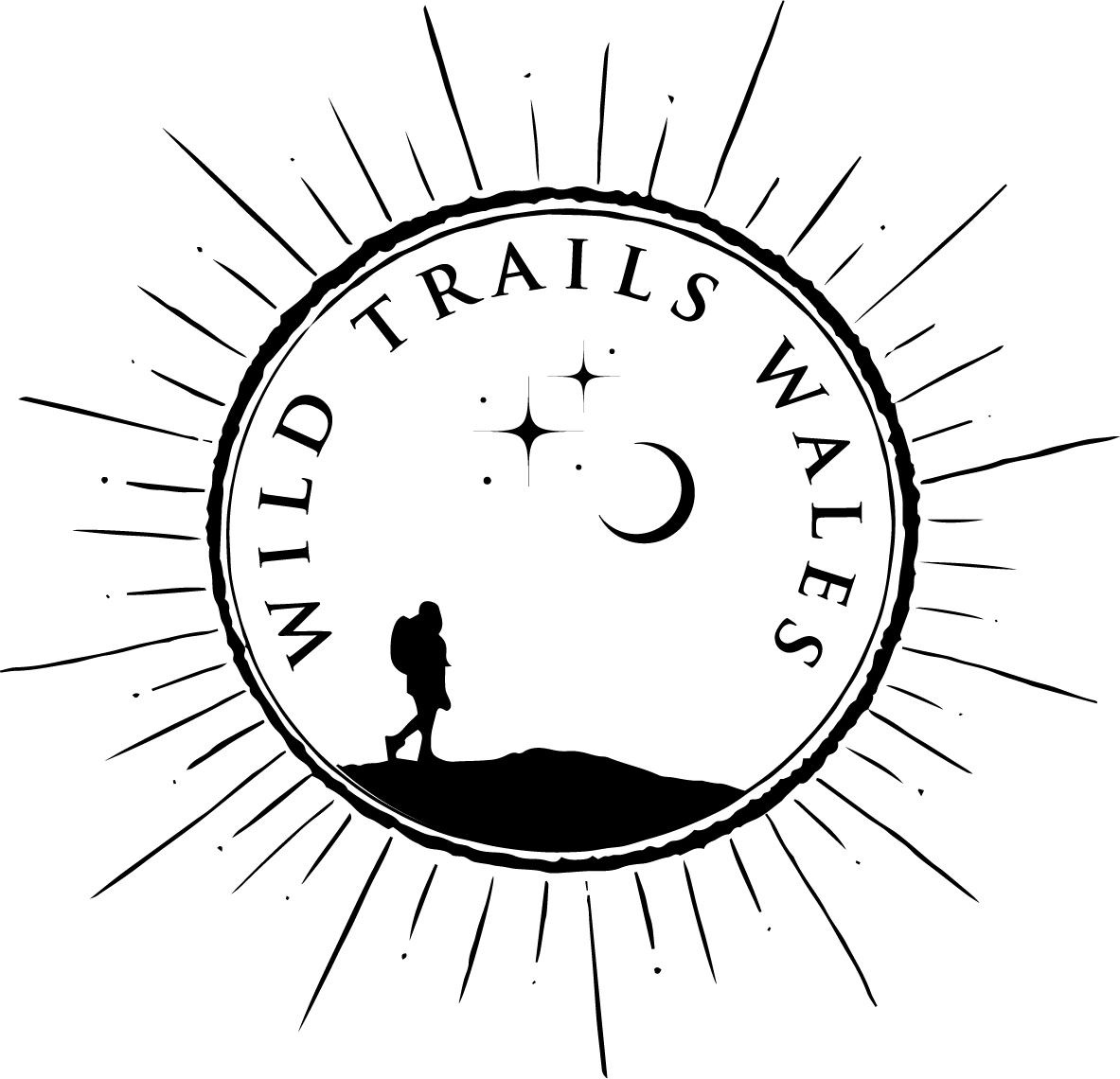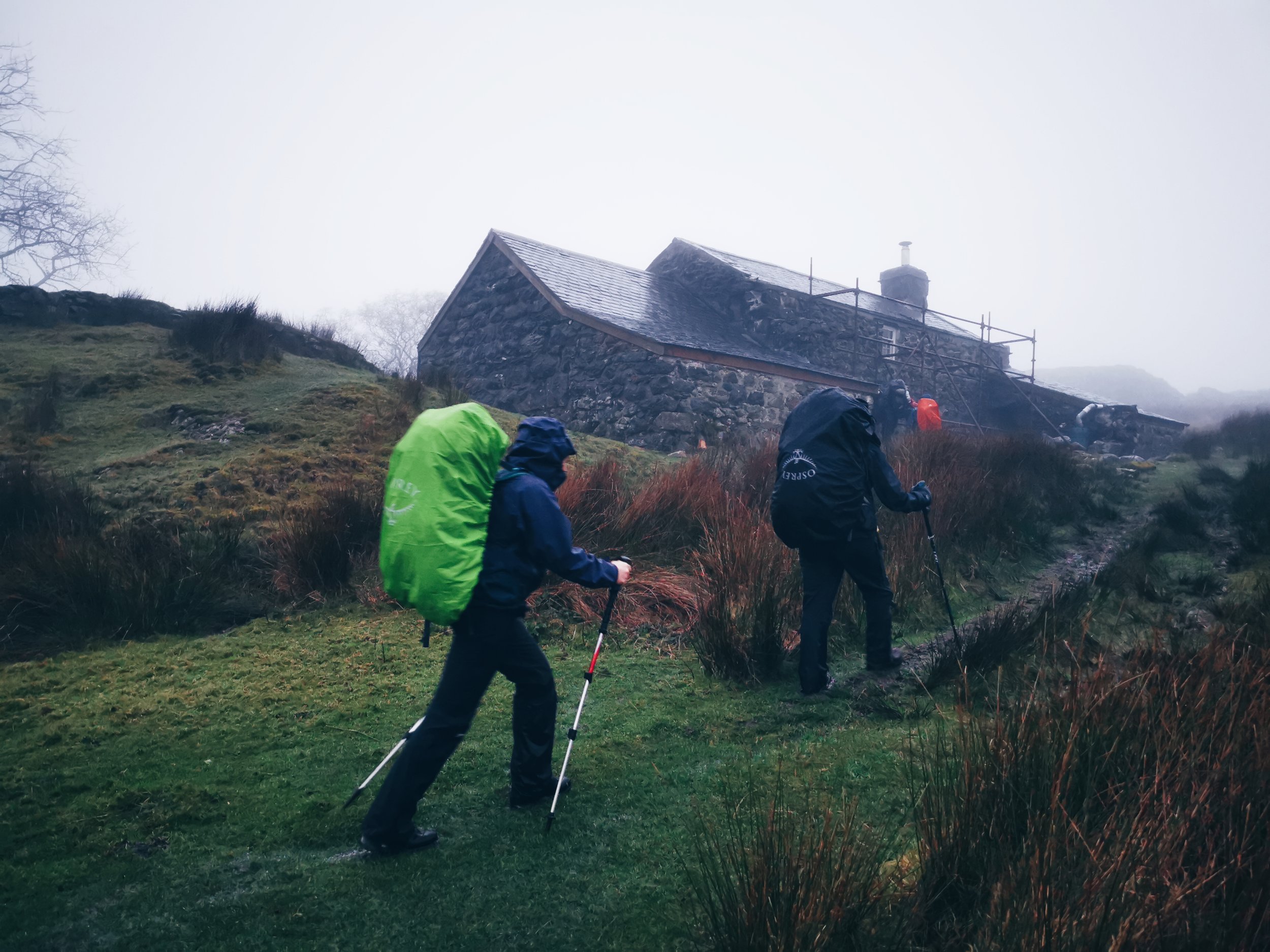Wild Trails Wales Guide: Staying in a bothy
Making friends around the fire
Walking through the mist and rain to spend the night in a bare-bones old farm house, sleeping on wooden platforms, potentially sharing the space with strangers, without electricity and usually with no toilet or running water, is not for everybody. For some of us though, the chance to go back to basics, to spend the night out in remote and open spaces, sharing stories with interesting folk around a fire, is pure magic, and offers a world away from our too-comfortable, over-sanitised, and safe lives of hot showers and warm beds behind closed doors (if we’re privileged enough to have this, of course). Try it once and see if you don’t fall in love with the completely simple, off-grid pastime of ‘bothying’.
For me, planning a bothy night always involves a mix of excitement and trepidation. Will it be full when I get there? Will it feel creepy? What if I don’t like the people that are also staying there? Am I going to be able to get comfortable enough to sleep? These are a few of the fears that go through my head, and they’ve almost always turned out to be unfounded. Every time I’ve had to share with others, we’ve always ended up having a great time, sharing stories, food and a wee dram. I’ve even stayed in touch with people I’ve met in bothies afterwards. I’ve been lucky that I’ve never turned up to a bothy that is too full; people generally squeeze up and make space for each other. I’ve also never stayed in a bothy that has felt creepy; but this is perhaps because I research them thoroughly before and steer clear of any with ghost stories attached to them!
Sheltering from the elements in a warm cosy bothy on the Isle of Skye
If you’re thinking of going to stay in a bothy for the first time, here are a few things that you may find useful to know beforehand.
Where to find information on individual bothies
The first stop for up-to-date information on bothies is the MBA (Mountain Bothies Association) website. Not all bothies are managed by them, but the majority are. They are a fantastic organisation of volunteers who rely on memberships to maintain the bothies in their care. There are a couple of independent bothy guidebooks which can also be useful and inspiring, but info may go out of date.
Bothies allow you to extend your time in remote places, and provide shelter from the elements.
How to use bothies
Bothies are free to use (though if you use them regularly consider becoming an MBA member or making a donation?) and open to everyone. You can’t book them, you have to just turn up and see. There is a generally accepted code of conduct for using bothies. The MBA’s Bothy Code is:
Respect Other Users
Respect the Bothy
Respect the Surroundings
Respect Agreement with the Estate
Respect the Restriction On Numbers
In other words, don’t trash the place, go to the toilet responsibly, be nice to other bothy users and take your rubbish away with you. Don’t chop down trees or branches or fences for a fire (green wood doesn’t burn anyway!).
What to pack
Pack as you would for a night’s camping in the mountains. Here’s a rough list of what I pack for a bothy night:
Sleeping mat, sleeping bag & travel pillow
Tent or bivvi in case there is a problem with the bothy or it is full
Food, water, stove & gas (or whatever fuel your stove uses)
Toilet roll, mini shovel & toiletries
Headtorch & batteries
Map, compass, phone, first aid kit
Rubbish bag
Kindling, wood & a lighter if you want to have a fire (not all bothies have one). I also like to pack a few tea lights.
Nothing better than catching sight of a bothy after walking in the rain
Where to find bothies in Wales
The MBA manages nine bothies in Wales:
Dulyn
Arenig Fawr
Grwyne Fawr
Lluest Cwmbach
Moel Prysgau
Nant Rhys
Nant Syddion
Penrhos Isaf
Cae Amos
You can find more details and map of them here.
There’s also the Claerddu Bothy managed by the Elan Valley Trust - complete with flushing toilet, this is perhaps a good option for your first bothying experience!
Thanks for reading. I’d love to hear about any bothy adventures you’ve been on, any interesting stories, whether you’re yet to stay in a bothy and if it’s something you’d love or hate to do! Leave a comment below, and feel free to ask any questions you may have.




